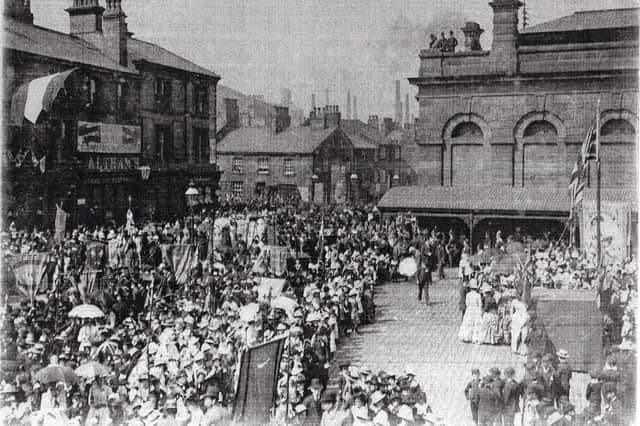Burnley obtained its first Market Charter, from Edward I, in 1294. The lord of the Manor, Henry de Lacy, earl of Lincoln, a person friend of the king, wanted to increase his income from the manor. A means of doing this was to charge stallage from the traders who attended the market.
The Charter gave Burnley exclusive rights for a twice weekly general market, an annual Fair and the right to have cattle, sheep and horse markets. These attracted business to the town and inns, brewing their own beer, were established. Other businesses were also stimulated like blacksmithing, wheel-making and lock-making.
The first general markets were held, near St Peter’s, but, by the eighteenth century, that site was no longer big enough for the number of traders who wanted to use it, so, in the latter part of the century, a gradual move was made to St James Street, and, after that, to the site shown in today’s photographs.
These days, the vibrant shopping centre is known as Charter Walk after the original Charter of 1294.
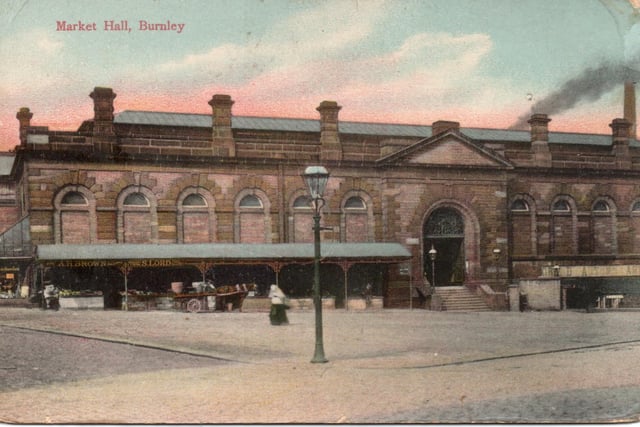
1. Fish market
An almost deserted view of the Market Hall and its Square from about 120 years ago. The long, low building with the horse and cart in front, left, is the original Fish Market, otherwise known as “The Slabs” because of the stone counters from which the fish was served. Photo: S
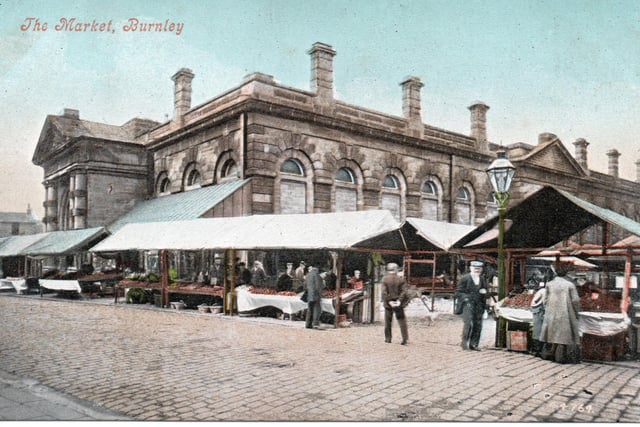
2. Postcard
An early postcard view of Burnley Market Hall and Market Square. Notice the gas lamp, right, and the spire of St James the Great, left Photo: S
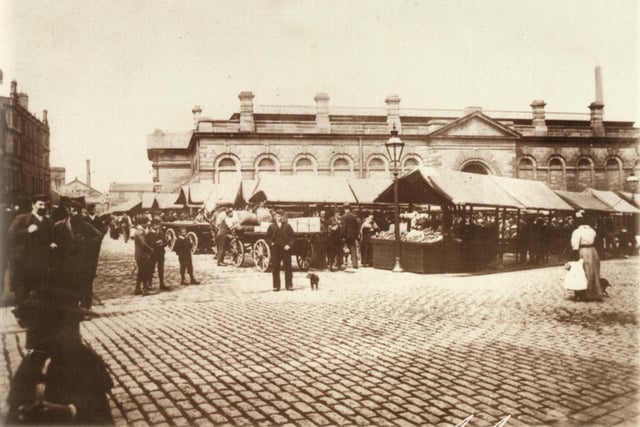
3. Circa 1907
Burnley Market Hall in about 1907. Notice the stone setts of Howe Street, in the foreground, and the number of chimneys on the roof of the building. The Market Square is in the foreground but there was another area, the Market Ground, which also had stalls, behind the Market Hall. Photo: S
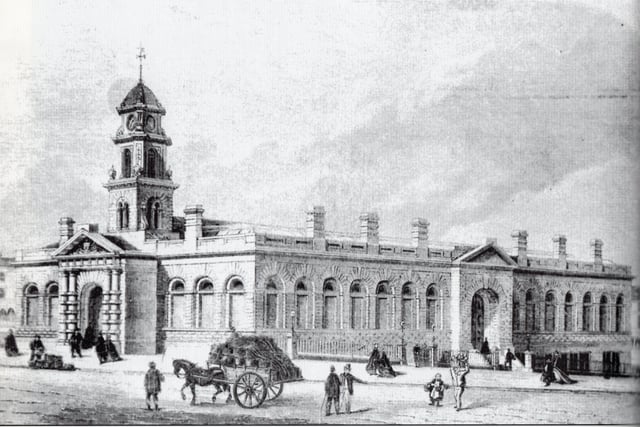
4. James Green
This is how the architect, James Green, in 1866, envisaged that the Market Hall would look, but the large tower, to the left in the image, was not built, though the base for it was. The building was completed in 1870. Photo: S
